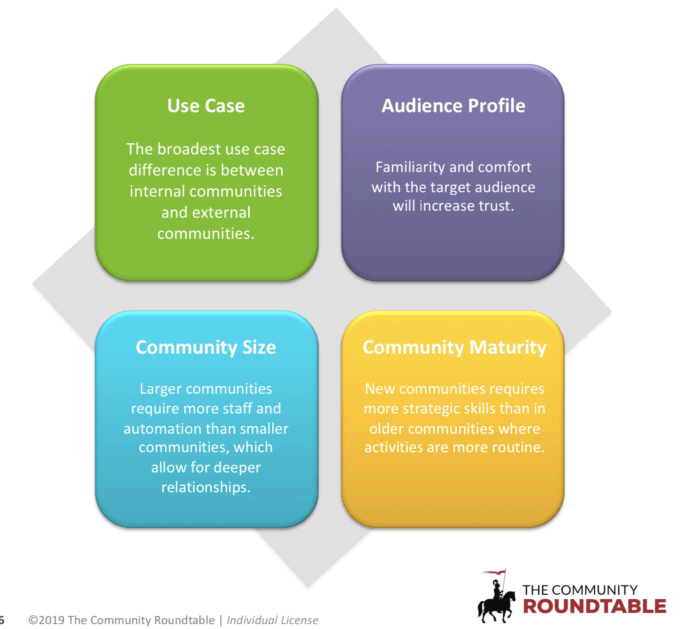Community roles – and their priorities – change not only by level of seniority and decision-making, but also by other factors; the use case, audience, community size, and community maturity.
Managing a new support community for a B2B company is very different than managing a mature, internal employee social network of 80,000 people who are all actively collaborating in hundreds of sub-communities during the day. Consider and emphasize these aspects in job descriptions, as they will determine who is the right fit.

The Anatomy of Community Roles
Community roles are differentiated by their focus on enabling and connecting others by architecting environments that make collaborative behaviors easy and rewarding. Most of community work is done under the waterline – the iceberg effect of community management – and typically does not prioritize the community professional as the primary leader, influencer, or support agent.
Community roles – and job titles – do often get confused with communication and support roles that are primarily tasked with responding directly to individuals and while that can be a part of a community role it is not the dominant priority. This can be evaluated by understanding the hiring managers’ objectives – and the level of engagement for which they are looking. If the role is predominantly about visibility and exposure of content, then it is likely not a true community building position.
Learn more and browse 30+ community management job descriptions in our Community Careers and Compensation report – now available for free download.

